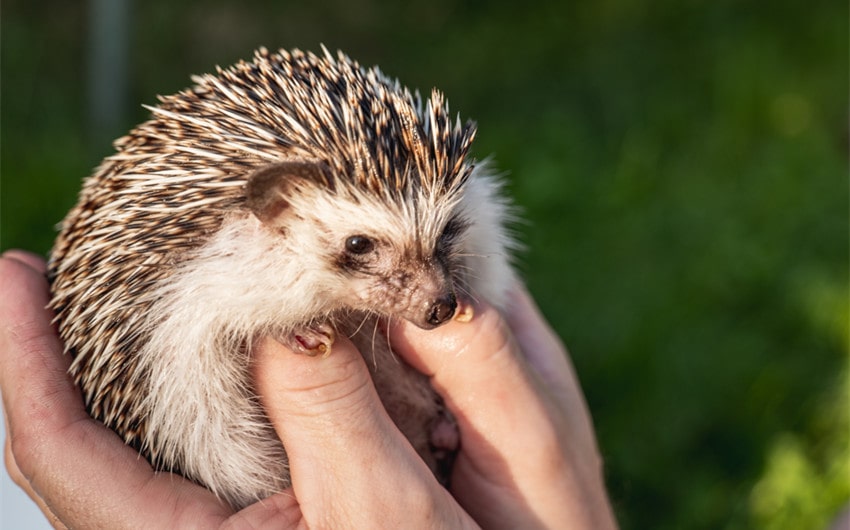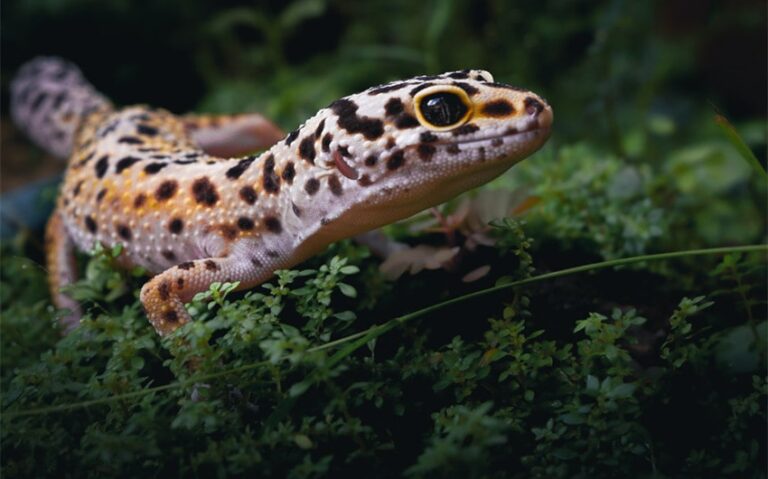5 Things to Know Before Bringing Home a Pet Hedgehog
Thinking of adding a unique and adorable companion to your home? A pet hedgehog might be the perfect choice! These tiny, spiky creatures are becoming increasingly popular due to their quirky behavior and manageable size. Whether you’re a first-time pet owner or looking for something different, hedgehogs can make wonderful pets with the right care.
In this article, we’ll explore everything you need to know about owning a pet hedgehog, from setting up their habitat to keeping them healthy and happy. Let’s dive into what makes these little animals such fun and rewarding pets!
Types of Pet Hedgehogs

There are several species of hedgehogs around the world, but only a few are commonly kept as pets. These small, spiky mammals have distinct characteristics that make them popular among exotic pet enthusiasts. When choosing a pet hedgehog, it’s essential to understand the differences between the various species and how their care needs may vary.
1. African Pygmy Hedgehog
The African Pygmy Hedgehog (Atelerix albiventris) is by far the most popular species kept as a pet. Native to Central and Eastern Africa, these hedgehogs are small, nocturnal animals that adapt well to domesticated life. They are known for their friendly temperament and manageable size, usually growing between 5 to 8 inches in length. African Pygmy Hedgehogs are loved for their social nature and unique personalities, making them ideal for first-time hedgehog owners.
- Appearance: They have a rounded body covered in short, sharp spines, with a soft belly and face. Their color can vary, with common shades being white, brown, and gray.
- Personality: They are generally shy at first but can become quite friendly and bond with their owners once they feel comfortable.
- Care Needs: These hedgehogs need a warm environment, as they are prone to hibernation if the temperature drops too low. A proper diet, exercise, and handling help ensure they thrive in a home setting.
2. Algerian Hedgehog
The Algerian Hedgehog (Atelerix algirus) is another species often kept as a pet, closely related to the African Pygmy. They are slightly larger than the African Pygmy, measuring between 8 to 11 inches, but they share many similar characteristics. These hedgehogs are native to parts of North Africa and are known for their distinctive facial markings.
- Appearance: Algerian Hedgehogs typically have a lighter-colored face with more pronounced markings, making them visually striking. Their quills are usually a mix of white and dark brown or gray.
- Personality: Like the African Pygmy, they can be shy but become friendly once they adapt to their environment. They may take a bit longer to warm up to humans, but with patience, they can be great companions.
- Care Needs: Their care is similar to the African Pygmy Hedgehog, requiring warmth, a balanced diet, and proper hygiene to maintain good health.
3. European Hedgehog
The European Hedgehog (Erinaceus europaeus) is not as common as a pet but is well-known in the wild throughout Europe. It is larger than the African Pygmy and Algerian species, often growing up to 12 inches in length. While not typically recommended for pet ownership due to their wild nature, some people in certain regions have domesticated them. However, owning a European Hedgehog as a pet may not be legal in some countries.
- Appearance: They have longer quills and a bulkier body compared to their African counterparts. Their color is often darker, with brown, black, or white-tipped spines.
- Personality: European Hedgehogs tend to be more independent and may not be as social or easy to tame. They have a strong instinct to roam and may require more space.
- Care Needs: Due to their larger size and wild nature, European Hedgehogs are generally more challenging to care for. They require a spacious habitat and are better suited to outdoor environments in areas where they are native.
4. Long-Eared Hedgehog
The Long-Eared Hedgehog (Hemiechinus auritus) is another less common but interesting species kept as a pet. As their name suggests, these hedgehogs have notably long ears, which give them a distinctive appearance. Native to parts of Central Asia, they are smaller and lighter than African Pygmy Hedgehogs, growing up to 5 to 8 inches in length.
- Appearance: Long-Eared Hedgehogs have an elongated face and oversized ears, with quills that are less dense than those of other species. They are usually lighter in color, with shades of brown or tan.
- Personality: These hedgehogs are more active and energetic, making them fun to watch. However, they can be more skittish and require gentle handling to build trust.
- Care Needs: Long-Eared Hedgehogs need plenty of room to explore and a stimulating environment to keep them entertained. They also prefer slightly cooler temperatures compared to other hedgehog species.
5. Other Hedgehog Species
While the African Pygmy and Algerian Hedgehog are the most common species in the pet trade, there are other hedgehog species like the Indian Long-Eared Hedgehog (Hemiechinus collaris) and the Somali Hedgehog (Atelerix sclateri). However, these species are less commonly available as pets due to legal restrictions and challenges in breeding.
Setting Up a Hedgehog Habitat
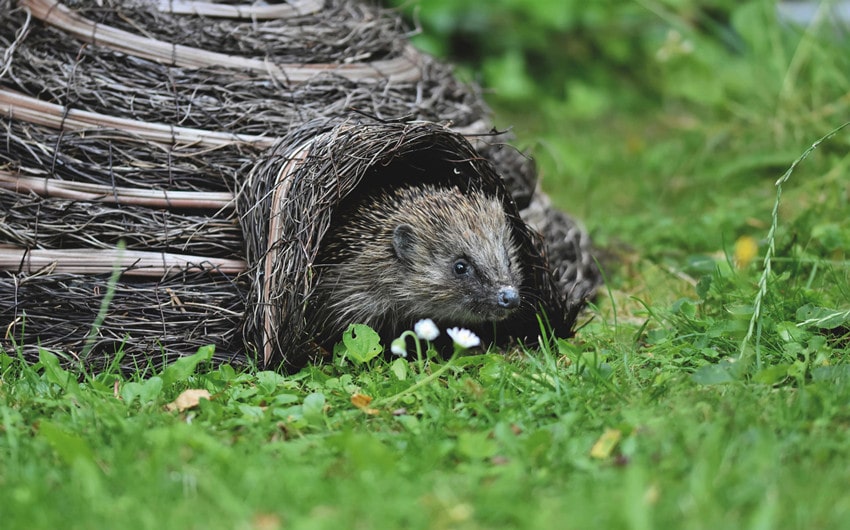
Creating a safe, comfortable, and stimulating environment is key to ensuring your pet hedgehog lives a healthy and happy life. A well-thought-out habitat not only provides your hedgehog with the space they need to explore and exercise but also helps maintain their physical and mental well-being. Here’s everything you need to know about setting up the perfect hedgehog habitat.
1. Housing
The first step in setting up a habitat is choosing the right type of enclosure. Hedgehogs require a spacious, secure environment where they can move around freely.
- Cage Size: The minimum recommended cage size for a pet hedgehog is 2 feet by 3 feet, but the bigger, the better. Hedgehogs are active animals, and they thrive in enclosures that give them plenty of room to explore.
- Cage Type: A wire cage with a solid plastic or metal bottom is ideal, as it provides good ventilation while preventing injuries. Make sure the spacing between the bars is small enough (no more than 1 inch) to prevent your hedgehog from escaping or getting stuck.
- Alternative Options: Large plastic bins, glass aquariums, or custom-built enclosures can also work as long as they have proper ventilation and are escape-proof. However, avoid using aquariums for long periods, as they can trap heat and humidity, making the environment uncomfortable for your hedgehog.
2. Bedding
Choosing the right bedding is essential for your hedgehog’s comfort and hygiene. The bedding should be soft, absorbent, and safe for your pet to burrow in.
- Recommended Bedding Types: Paper-based bedding is one of the best options for hedgehogs. It’s soft, dust-free, and absorbent, keeping the habitat clean and comfortable. Some examples include Carefresh or other paper-based small animal bedding.
- Avoid Wood Shavings: Certain types of wood shavings, such as cedar, can be harmful to hedgehogs due to the oils and dust they release, which can irritate their respiratory system. If you prefer wood bedding, opt for kiln-dried aspen, which is safer and less irritating.
- Bedding Depth: Ensure the bedding is deep enough (around 2-3 inches) to allow your hedgehog to burrow, as this is a natural behavior for them. Regularly clean and replace bedding to maintain hygiene and prevent odors.
3. Temperature Control
Maintaining the proper temperature in your hedgehog’s habitat is critical to their health. Hedgehogs are sensitive to temperature changes, and if the environment becomes too cold, they may attempt to hibernate, which can be life-threatening for domesticated hedgehogs.
- Ideal Temperature: The optimal temperature range for a pet hedgehog is between 72°F and 80°F (22°C to 27°C). Temperatures outside this range can cause discomfort or lead to health issues.
- Heating Options: If you live in a cooler climate, you may need to invest in a heating source to maintain the right temperature in the enclosure. A ceramic heat emitter (CHE) is a great option as it provides heat without light, ensuring your hedgehog’s environment stays warm without disrupting their natural nocturnal cycle. Heating pads placed under part of the cage can also help, but ensure they don’t overheat the entire enclosure.
- Avoid Drafts and Overheating: Place the cage away from drafty areas or direct sunlight to prevent temperature fluctuations. Hedgehogs are also sensitive to extreme heat, so make sure their habitat doesn’t exceed 80°F.
4. Hiding Spaces and Enrichment
Hedgehogs are naturally shy animals that enjoy having places to hide. Adding hiding spaces and enrichment items to their habitat is essential for their mental stimulation and sense of security.
- Hiding Spots: Provide at least one hiding spot where your hedgehog can retreat to during the day. Options include igloos, wooden houses, or DIY hideaways made from cardboard boxes. These hideouts help reduce stress and make your hedgehog feel safe.
- Tunnels and Tubes: Hedgehogs love to explore, and adding tunnels or tubes can give them a way to move around their habitat in an enriching way. PVC pipes, plastic tunnels, and fabric tubes are all great options.
- Climbing Structures: While hedgehogs are not expert climbers, they do enjoy low platforms or ramps that allow them to exercise and explore vertically. Just ensure that any climbing structures are safe and low to the ground to prevent falls.
- Exercise Wheel: An exercise wheel is essential for keeping your hedgehog active. Choose a solid-surface wheel with a diameter of at least 12 inches to avoid injury to their feet. Hedgehogs are nocturnal, so they’ll likely use the wheel at night to burn off energy.
5. Water and Feeding Area
The placement and type of water and food dishes are also important considerations when setting up your hedgehog’s habitat.
- Water Source: Hedgehogs can drink from either a water bottle or a shallow water dish. A water bottle helps keep the enclosure clean, but some hedgehogs prefer drinking from a dish. If you use a dish, ensure it’s shallow and stable to prevent tipping. Change the water daily to keep it fresh.
- Food Dish: Choose a shallow, heavy ceramic dish for food to prevent your hedgehog from tipping it over. Place the food dish in an easily accessible area of the cage, but not too close to the sleeping or litter area to keep the food clean.
6. Cleaning and Maintenance
To keep your hedgehog’s habitat safe and hygienic, regular cleaning is necessary.
- Daily Cleaning: Remove uneaten food, spot clean soiled bedding, and check the water supply daily.
- Weekly Cleaning: Once a week, do a more thorough cleaning by replacing all bedding, scrubbing the enclosure, and disinfecting food and water dishes. Use pet-safe cleaning products to avoid exposing your hedgehog to harsh chemicals.
- Odor Control: Hedgehogs themselves don’t have a strong smell, but their habitat can develop odors if not cleaned regularly. Providing fresh bedding and maintaining a clean environment helps minimize odor.
Diet and Nutrition for Hedgehogs
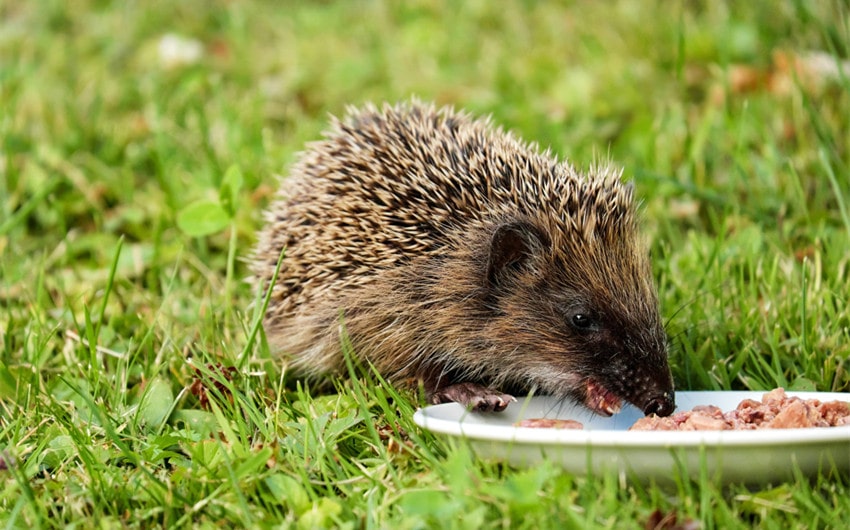
A balanced diet is crucial for your pet hedgehog’s health. As omnivores, they require a mix of protein, fat, and fiber, similar to what they would consume in the wild. Here’s a concise guide to the best dietary practices for your hedgehog.
1. Staple Foods
- Commercial Hedgehog Food: Formulated specifically for hedgehogs, this food provides the correct balance of protein (30-35%) and fat (10-15%). Brands like Mazuri and Spike’s Delite are great choices.
- High-Quality Cat Food: Grain-free cat food with a high protein content is a good alternative. Look for foods rich in animal-based protein and low in fat.
- Insects: Mealworms, crickets, and dubia roaches are great protein sources. Feed insects in moderation due to their fat content.
2. Treats
- Fruits: Apples, bananas, blueberries, and melons are safe in small amounts. Avoid overfeeding due to sugar content.
- Vegetables: Safe options include carrots, green beans, and peas. Cook and chop them into small pieces to prevent choking.
- Cooked Meat: Lean, plain chicken or turkey can be given occasionally as a protein boost.
3. Foods to Avoid
- Dairy Products: Hedgehogs are lactose intolerant, so avoid milk, cheese, and yogurt.
- Nuts and Seeds: These are high in fat and pose a choking hazard.
- Avocado: Toxic to hedgehogs and should never be fed.
- Raw Meat, Eggs, and Fish: These can carry harmful bacteria.
- Processed Human Foods: Foods high in sugar, salt, or fat are not suitable.
4. Feeding Schedule and Portion Sizes
Feed your hedgehog in the evening when they are most active. About 1 to 2 tablespoons of dry food per night is sufficient. Treats and insects should make up no more than 10% of their diet.
Handling and Bonding with Your Pet Hedgehog
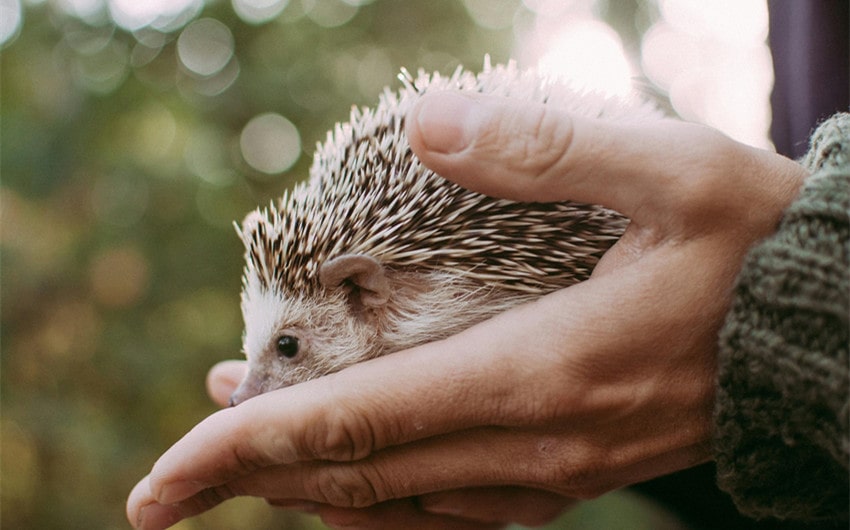
Handling and bonding with your hedgehog is an essential part of creating a trusting and comfortable relationship. Hedgehogs are naturally shy and may curl up into a ball when they feel threatened, so building trust takes time and patience. Here’s how you can safely handle and bond with your pet hedgehog while ensuring they feel secure and relaxed.
1. Creating a Calm Environment
Before handling your hedgehog, it’s important to establish a calm and quiet environment. Hedgehogs are sensitive to noise and sudden movements, which can easily startle them. A peaceful setting helps reduce stress and encourages your hedgehog to feel safe when interacting with you.
- Quiet Spaces: Handle your hedgehog in a low-traffic, quiet area of your home. Avoid loud noises, bright lights, or sudden movements.
- Timing: Hedgehogs are nocturnal, so they are most active in the evening. Try to handle them during their natural waking hours for the best results.
2. Introducing Yourself to Your Hedgehog
When you first bring your hedgehog home, they will need time to adjust to their new environment. During this period, it’s essential to let your hedgehog get used to your presence.
- Scent Familiarization: Hedgehogs rely heavily on their sense of smell. Place an item with your scent, such as a worn T-shirt or cloth, in their cage to help them become familiar with you. This will make handling less intimidating as your hedgehog will associate your scent with safety.
- Observing Body Language: Watch your hedgehog’s behavior. If they curl up into a ball or hiss, give them space and try again later. Patience is key.
3. Safe Handling Techniques
Hedgehogs have sharp quills, and it’s important to handle them carefully to avoid injury to both you and your pet. Over time, your hedgehog will become more comfortable with being picked up, but here are steps to ensure safe handling:
- Approach Slowly: Always approach your hedgehog slowly from the front or side. Sudden movements can startle them, causing them to curl up tightly.
- Use Both Hands: Place your hands gently underneath your hedgehog, supporting its body fully. Their underside is soft, so this will feel more secure to them than being grabbed from above. You can use gloves if you’re concerned about the quills at first, but it’s best to handle them bare-handed once you’re comfortable.
- Scooping Motion: When lifting, use a gentle scooping motion with both hands. Let your hedgehog adjust to being in your hands before lifting them higher.
- Avoid Rough Handling: Never squeeze or hold your hedgehog too tightly. This could stress them out or cause them to ball up more tightly.
4. Building Trust and Bonding
Bonding with a hedgehog can take time and requires consistency. Over time, your hedgehog will begin to recognize you and feel more comfortable being handled. Here are some ways to build trust:
- Frequent Handling: Start with short handling sessions of about 10-15 minutes each day. Over time, gradually increase the length of these sessions as your hedgehog becomes more comfortable. Regular handling helps your hedgehog get used to your touch and presence.
- Gentle Interaction: While holding your hedgehog, speak softly to them. Hedgehogs respond well to a calm voice and will start to recognize your scent and sound. Gently pet the soft areas of their body, avoiding the quills until they seem relaxed.
- Hand Feeding: Offering treats directly from your hand is a great way to build trust. Use hedgehog-safe treats like mealworms or small bits of fruit, and allow your hedgehog to take them from your palm. This helps your hedgehog associate you with positive experiences.
5. Respecting Your Hedgehog’s Boundaries
Not all hedgehogs are the same when it comes to bonding, and some may take longer to warm up to handling. It’s important to respect their boundaries and give them space when needed.
- Don’t Force Interaction: If your hedgehog is consistently curling into a ball, hissing, or refusing to be handled, give them a break and try again later. Forcing interaction can create fear and anxiety.
- Signs of Stress: Look for signs of stress, such as trembling, heavy breathing, or excessive balling up. If you notice these, reduce handling time and focus on other bonding methods like hand-feeding and scent familiarization.
6. Creating a Bond Through Play and Exploration
Letting your hedgehog explore outside their cage is a great way to build a bond and provide enrichment. Hedgehogs enjoy having safe spaces to roam and investigate, which can help reduce boredom and encourage physical activity.
- Playtime Setup: Create a small, enclosed area where your hedgehog can roam. Place tunnels, small toys, and hiding spots around to keep them stimulated.
- Supervised Exploration: Let your hedgehog explore at their own pace. Supervise them closely to prevent them from getting into unsafe areas.
- Use a Playpen: If you’re concerned about safety, a playpen designed for small animals can give your hedgehog a secure space to explore.
7. Understanding Hedgehog Behavior
Hedgehogs have distinct behaviors, and learning to understand their cues is crucial for developing a strong bond.
- Quilling: Young hedgehogs go through a process called quilling, where they shed baby quills and grow new adult ones. This can make them irritable and more sensitive to handling. During this time, handle them gently and with extra care.
- Huffing and Popping: Hedgehogs may huff, hiss, or pop when they feel scared or threatened. This is normal behavior and doesn’t mean your hedgehog dislikes you—it’s just their way of expressing fear. If this happens, move slowly and give them time to calm down.
Hedgehog Health and Common Issues
Maintaining your pet hedgehog’s health is a crucial part of being a responsible owner. Hedgehogs are generally hardy animals, but like all pets, they are susceptible to specific health problems. Early detection and proper care are vital to preventing minor issues from becoming serious health concerns. Understanding the signs of a healthy hedgehog, recognizing common health problems, and knowing when to seek veterinary care are essential to keeping your pet healthy and happy.
1. Signs of a Healthy Hedgehog
A healthy hedgehog will exhibit several key signs that indicate they are thriving. Monitoring their behavior, appetite, and physical appearance regularly can help you spot potential issues before they worsen.
- Clear, Bright Eyes: A healthy hedgehog has bright, alert eyes with no signs of discharge or cloudiness. Cloudy or swollen eyes can be a sign of illness or injury.
- Smooth, Intact Quills: The quills should be smooth and evenly distributed across the hedgehog’s back. Bald patches or broken quills can indicate stress, mites, or other underlying health issues.
- Clean Ears and Nose: Your hedgehog’s ears should be clean and free of wax or scabs, and their nose should be dry with no signs of discharge. Discharge from the nose or ears may signal respiratory or ear infections.
- Normal Weight and Activity Levels: A healthy hedgehog maintains a stable weight and is active during their waking hours. Hedgehogs are nocturnal, so they should be active at night, exploring, eating, and using their exercise wheel.
- Good Appetite: Regular eating habits and a good appetite are signs that your hedgehog is in good health. Sudden changes in appetite, such as refusing food, can indicate illness.
2. Common Health Problems
Although hedgehogs are relatively robust, there are several health issues they are prone to. Being aware of these common problems can help you identify and address them early.
Mites
Mites are tiny parasites that can infest a hedgehog’s skin, causing irritation and discomfort. Hedgehogs with mites may scratch excessively, lose quills, and develop dry, flaky skin. Mites are a common issue, but they are treatable with veterinary care.
- Symptoms: Excessive scratching, quill loss, dry or flaky skin, red or irritated areas on the body.
- Treatment: A vet can prescribe mite treatments, usually in the form of topical or oral medications. It’s also important to thoroughly clean the hedgehog’s habitat to eliminate the mites.
Obesity
Obesity is one of the most common health problems in pet hedgehogs, primarily due to improper diet and lack of exercise. Hedgehogs that are overweight may become lethargic, have difficulty moving, and be more prone to other health issues like joint problems and fatty liver disease.
- Symptoms: Excessive weight gain, difficulty moving or rolling into a ball, decreased activity.
- Prevention and Treatment: Feed your hedgehog a balanced diet with appropriate portion sizes and avoid high-fat foods like too many mealworms. Providing an exercise wheel and encouraging daily activity will help keep your hedgehog at a healthy weight.
Respiratory Infections
Hedgehogs are sensitive to temperature changes and drafts, which can lead to respiratory infections if not properly managed. Symptoms of respiratory infections include sneezing, coughing, nasal discharge, and labored breathing.
- Symptoms: Wheezing, coughing, sneezing, nasal discharge, difficulty breathing, lethargy.
- Treatment: Respiratory infections require prompt veterinary care. Treatment usually involves antibiotics and supportive care. Keep your hedgehog’s habitat warm and free from drafts to prevent infections.
Wobbly Hedgehog Syndrome (WHS)
Wobbly Hedgehog Syndrome is a rare but serious neurological disorder that affects some hedgehogs. It usually develops in hedgehogs between 18 months and 3 years old and causes progressive loss of muscle control.
- Symptoms: Wobbling or unsteady gait, difficulty walking, falling over, paralysis in later stages.
- Treatment: Unfortunately, there is no cure for WHS, and it is often fatal. However, supportive care can help manage symptoms and keep your hedgehog comfortable.
Dental Problems
Hedgehogs are prone to dental issues, especially as they age. Tooth decay, gum disease, and abscesses can cause significant discomfort and make it difficult for your hedgehog to eat.
- Symptoms: Drooling, difficulty eating, weight loss, swollen gums, bad breath.
- Treatment: Regular veterinary check-ups are important to monitor dental health. A vet can perform dental cleanings and, if necessary, extract damaged teeth. Feeding hard kibble helps to maintain dental health by reducing tartar buildup.
Digestive Issues
Digestive problems in hedgehogs can be caused by sudden changes in diet, consuming inappropriate foods, or infections. Common signs include diarrhea, constipation, or vomiting.
- Symptoms: Loose stools, constipation, loss of appetite, vomiting.
- Treatment: If digestive issues persist for more than a day or two, consult a vet. In the meantime, ensure your hedgehog is hydrated and avoid feeding them rich or unfamiliar foods.
Quilling
Young hedgehogs go through a process known as quilling, where they shed their baby quills and grow new adult quills. This is a natural process but can cause discomfort and irritability.
- Symptoms: Quill loss, skin irritation, slight behavioral changes (grumpiness).
- Treatment: While quilling is natural and doesn’t require treatment, you can help by providing gentle handling and offering soothing oatmeal baths to relieve skin irritation.
3. Preventative Health Care
Preventative care is key to keeping your hedgehog healthy. Regular maintenance and monitoring can help prevent many common health issues.
- Habitat Cleanliness: Keeping your hedgehog’s habitat clean is crucial for preventing mites, respiratory infections, and other health problems. Clean their enclosure weekly, and replace bedding regularly.
- Diet and Weight Management: A well-balanced diet and maintaining a healthy weight can prevent obesity and other diet-related conditions. Regularly monitor your hedgehog’s weight to ensure they’re staying within a healthy range.
- Exercise: Providing an exercise wheel and ensuring your hedgehog gets daily physical activity can help prevent obesity and keep them mentally stimulated.
- Temperature Control: Maintaining a stable, warm environment is crucial in preventing respiratory infections. Avoid sudden temperature changes, and ensure their habitat remains within the optimal range of 72°F to 80°F (22°C to 27°C).
4. When to See a Vet
Knowing when to seek veterinary care is vital for your hedgehog’s health. If you notice any sudden or concerning changes in your hedgehog’s behavior or physical condition, it’s always best to consult a vet.
- Urgent Signs: Difficulty breathing, significant weight loss, inability to move, excessive lethargy, and persistent diarrhea or vomiting are all signs that require immediate veterinary attention.
- Finding a Hedgehog-Savvy Vet: Not all vets are experienced with hedgehogs, so it’s important to find a vet who specializes in exotic pets. Regular check-ups can help detect any health problems early.
Frequently Asked Questions about Pet Hedgehogs

1. How often should I trim my hedgehog’s nails?
Trim your hedgehog’s nails every few weeks to prevent overgrowth. Use small nail clippers and be careful not to cut too close to the quick.
2. Do hedgehogs need companionship from other hedgehogs?
No, hedgehogs are solitary animals and prefer to live alone. Housing two hedgehogs together can cause stress and fighting.
3. How long do pet hedgehogs live?
With proper care, pet hedgehogs live 4 to 6 years, and sometimes up to 8 years.
4. Why does my hedgehog lick and bite?
This behavior, known as “self-anointing,” is normal. Hedgehogs spread frothy saliva on their quills after encountering new scents.
5. Can hedgehogs recognize their owners?
Yes, hedgehogs can recognize their owners by scent and sound with regular interaction, though bonding may take time.

